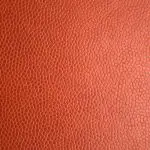Are you tired of your leather items feeling rough and uncomfortable against your skin? Learn how to line leather with fabric and transform your accessories into luxurious and comfortable pieces.
In this article, we will guide you through the process of selecting the right fabric, preparing the leather, and attaching the fabric lining.
With our step-by-step instructions, you’ll be able to enjoy the softness of fabric while still appreciating the durability and style of leather.
Table of Contents
Selecting the Right Fabric for Lining Leather
You’ll need to choose the right fabric for lining your leather. When selecting the fabric material, consider both the pros and cons of different options.
One popular choice is cotton fabric. It is lightweight, breathable, and comfortable against the skin. However, it may not be as durable as other materials and can wear out over time.
Another option is polyester fabric. It is known for its strength and resistance to wrinkles and shrinking. Polyester also has good abrasion resistance, making it suitable for lining leather items that will be subjected to heavy use. However, it may not be as breathable as cotton and can cause discomfort in hot weather.
A third option is silk fabric. Silk is luxurious, soft, and has excellent temperature-regulating properties. It also adds a touch of elegance to leather items. However, it is more delicate and may require special care when cleaning.
Ultimately, the choice of fabric material for lining leather depends on your personal preferences and the specific use of the item. Consider the pros and cons of each option to make an informed decision.
Preparing the Leather for Lining
First, make sure to thoroughly clean the surface of the leather before attaching the fabric lining. This step is crucial to ensure that the fabric adheres properly and doesn’t get dirty or stained.
Here are some sewing techniques, tools, and materials you will need for preparing the leather for lining:
- Leather cleaner or mild soap and water solution
- Soft cloth or sponge for cleaning
- Leather conditioner or moisturizer
- Lint-free cloth for drying
To prepare the leather for lining, follow these steps:
- Remove any dirt or debris from the leather surface using a soft cloth or sponge.
- Apply a small amount of leather cleaner or mild soap and water solution to the cloth and gently clean the leather, paying attention to any stains or marks.
- Rinse the cloth or sponge and wipe away any residue from the leather.
- Allow the leather to dry completely before moving on to the next step.
Cutting and Preparing the Fabric for Lining
To start, gather the necessary tools and materials for cutting and preparing the fabric for lining. You’ll need a fabric of your choice, scissors, a ruler or measuring tape, pins, and an iron.
Begin by measuring accurately the dimensions of the area you want to line. Make sure to add extra fabric for seam allowance. Once you have your measurements, lay out the fabric on a flat surface and use the ruler or measuring tape to mark the dimensions.
Next, carefully cut along the marked lines using the scissors. Take your time to ensure clean and straight cuts.
After cutting, it’s essential to iron the fabric to remove any wrinkles or creases. Set your iron to the appropriate temperature for the fabric type and gently glide it over the fabric, smoothing out any imperfections. Ironing will help the fabric lay flat and create a professional finish.
Once the fabric is cut and ironed, it is now ready to be attached to the leather.
Attaching the Fabric Lining to the Leather
Now, grab your sewing needle and thread to attach the lining securely to the leather. There are a few techniques for hand stitching the lining to the leather that you can try.
One method is to use a whipstitch, where you pass the needle through the lining and then through the leather, creating a continuous stitch along the edge. Another option is the slip stitch, where you hide the stitches between the lining and the leather for a more seamless finish. Whichever technique you choose, make sure to pull the thread tight enough to secure the lining firmly in place.
If you’re looking for alternatives to fabric for lining leather, there are a few options you can consider. One popular choice is suede, which not only adds a luxurious feel but also provides extra durability. Another option is using a lightweight leather or faux leather as the lining itself. This can create a unique and cohesive look while also adding strength to the overall structure of the leather item.
Finishing Touches: Cleaning and Caring for Leather Lined With Fabric
When caring for leather lined with fabric, it’s important to follow specific cleaning instructions to maintain its quality and longevity. Cleaning leather lined with fabric requires gentle methods to avoid damaging the delicate material.
To start, remove any loose dirt or dust by gently brushing the surface with a soft-bristled brush. Avoid using harsh chemicals or abrasive cleaners, as they can cause discoloration or damage the fabric lining. Instead, opt for a mild soap or leather cleaner specifically designed for delicate fabrics.
Apply a small amount of the cleaner onto a clean, damp cloth and gently wipe the surface of the leather. Be sure to test the cleaner on a small, inconspicuous area first to ensure it doesn’t cause any adverse effects. Once the leather is clean, allow it to air dry naturally. Avoid direct sunlight or heat sources, as they can cause the leather to crack or fade.
To maintain the quality of the fabric lining, avoid exposing it to excessive moisture or spills. If a spill occurs, blot it immediately with a clean, absorbent cloth. Regularly conditioning the leather can also help keep it soft and prevent cracking.
Follow these tips to ensure your leather lined with fabric stays clean, beautiful, and durable for years to come.
Conclusion
In conclusion, lining leather with fabric is a simple and effective way to add style and durability to your leather projects. By selecting the right fabric, preparing the leather, cutting and preparing the fabric, and attaching it securely, you can create a beautiful and long-lasting lining.
Remember to clean and care for your leather lined with fabric regularly to maintain its quality and longevity. With these steps, you can confidently line leather with fabric and enjoy the benefits of a well-crafted and stylish piece.
- How Does Ring Spun Cotton Affect Garment Fit and Shape Retention? - August 13, 2024
- What Are the Challenges in Producing Ring Spun Cotton? - August 13, 2024
- Is Ring Spun Cotton Suitable for Plus-Size Clothing? - August 13, 2024



